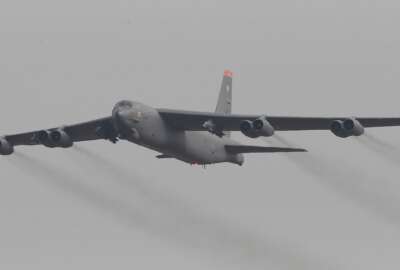
Trouble ahead for Defense budget, analyst says
Fiscal 2017 may be the beginning of a funding gap between what the Defense Department needs and what it can be allocated unless Congress can fix the budget.
The 2017 budget request may be the beginning of an expanding funding hole in the Defense Department’s future years defense plan.
Defense Secretary Ash Carter released the numbers for the 2017 Defense budget Feb. 2, which come in only slightly under what the Pentagon says it needs in order to be fully funded.
Carter announced President Barack Obama will ask Congress to appropriate $582.7 billion for 2017. That number includes the base budget and the overseas contingency operations (OCO) account, which is traditionally used for emergency situations.
DoD is already working with a $14 billion to $22 billion deficit for 2017. If Congress can’t get rid of sequestration or come up with a budget deal that raises the caps to the full funding level, DoD could be looking at a further deficit of $104.5 billion (in current dollars) by 2021.
But, that slight deficit may begin a trend that diverts the department’s funding requests further and further away from its planned spending as the years progress, said Katherine Blakeley a research fellow at the Center for Strategic and Budgetary Assessments.
“There’s $104.5 billion in deficits between the current [sequestration] caps and the [future years defense plan],” Blakeley said Feb. 1 in Washington. “What this means is over the long term the Pentagon is still hoping for more money, hoping for sequester relief in the out-years, but their plans are going to be a lot more difficult to execute if they don’t get it. This is a continuation of the shift we’ve seen where you just push the spending to the out-years, push it a little further out, hope for some miracles. Maybe you get a couple minor miracles, but you’re still stacking the deck after the [sequestration] caps and putting a lot of your major spending there.”
The request was made in order to conform to the 2015 budget deal that raised the sequestration caps, allowing for more government spending. The budget deal forced the Pentagon to compromise. If sequestration was triggered by going over the budget caps, DoD would have been forced to deal with a base budget of $498 billion.
The budget deal raised the base budget cap to $525 billion, with $8 billion in flexible spending from OCO. But, the President’s original Defense request was going to be for $547 billion, creating the $14 billion to $22 billion deficit depending on how the flexible OCO is used. The rest of the $582.7 billion is made up using OCO and is used for things like the wars against the Islamic State militants and in Afghanistan.
Modernization efforts
The possible increasing deficit between the top line and actual budget realizations comes at a time when DoD costs will be rising due to the modernization of major weapons platforms.
DoD has more than 120 major acquisition programs currently in process or planned to start during the next 10 years, according to a study by the Center for Strategic and International Studies.
The overall increase will mean DoD will spend about $90 billion per year at its peak in 2022.
The Air Force’s modernization budget is expected to grow by 73 percent from about $19 billion in fiscal 2015 to about $33 billion at its peak in 2023. The costs will then even out to about $25 billion per year around 2028, the study stated.
The Navy and Marine Corps are expected to spend between $34 billion and $36 billion between 2016 and 2022, the study stated.
Carter said during his speech that if needed he was willing to sacrifice force structure for modernization.
“Where trade-offs among force structure, modernization and readiness posture needed to be made, we generally pushed to favor the latter two. This is important, because our military has to have the agility and ability to win not only the wars that could happen today, but also the wars that could happen in the future,” Carter said at an event hosted by the Economic Club of Washington.
Those trade-offs come in the form of projects that are already in place like the Long Range Strike Bomber, the F-35 and the Virginia-Class submarine. Those programs could be considered parts of the Defense Department’s third offset strategy, which is intended to keep the United States military at the technological forefront.
Carter also said DoD will be investing $7 billion in cyber in 2017 and $35 billion throughout the next five years.
But, when it comes to programs that are considered truly part of third offset strategy, Blakeley said the Defense Department will only be spending about $1 billion in 2017. The third offset will then grow to about $12 billion to $17 billion over the future years defense plan.
“This is still a quite nascent initiative, it’s not clear there is going to be a lot of money in it this year,” Blakeley said. “I see this starting out as a relatively small set of investments as they figure out what they are going to invest in and where the money is going to go and then potentially ramping up over the [future years defense plan].”
The future of the offset strategy may be in jeopardy as Carter’s tenure is coming to an end. With a new presidential administration coming in next year, Blakeley said one question on everyone’s mind is whether the initiative will be as laser focused.
It is possible the new Defense secretary could favor capacity over capability and phase out the emphasis on technological investments created by Carter.
Copyright © 2024 Federal News Network. All rights reserved. This website is not intended for users located within the European Economic Area.
Scott Maucione is a defense reporter for Federal News Network and reports on human capital, workforce and the Defense Department at-large.
Follow @smaucioneWFED




